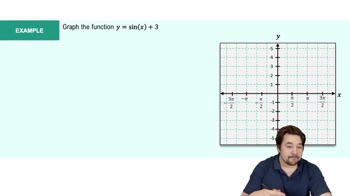Table of contents
- 0. Functions7h 52m
- Introduction to Functions16m
- Piecewise Functions10m
- Properties of Functions9m
- Common Functions1h 8m
- Transformations5m
- Combining Functions27m
- Exponent rules32m
- Exponential Functions28m
- Logarithmic Functions24m
- Properties of Logarithms34m
- Exponential & Logarithmic Equations35m
- Introduction to Trigonometric Functions38m
- Graphs of Trigonometric Functions44m
- Trigonometric Identities47m
- Inverse Trigonometric Functions48m
- 1. Limits and Continuity2h 2m
- 2. Intro to Derivatives1h 33m
- 3. Techniques of Differentiation3h 18m
- 4. Applications of Derivatives2h 38m
- 5. Graphical Applications of Derivatives6h 2m
- 6. Derivatives of Inverse, Exponential, & Logarithmic Functions2h 37m
- 7. Antiderivatives & Indefinite Integrals1h 26m
- 8. Definite Integrals4h 44m
- 9. Graphical Applications of Integrals2h 27m
- 10. Physics Applications of Integrals 2h 22m
1. Limits and Continuity
Finding Limits Algebraically
Problem 3.5.21
Textbook Question
Use Theorem 3.10 to evaluate the following limits.
lim x🠂0 sin ax / sin bx, where a and b are constants with b ≠ 0.
 Verified step by step guidance
Verified step by step guidance1
Theorem 3.10 is the standard limit result: lim x→0 (sin x)/x = 1. This theorem is useful for evaluating limits involving sine functions as x approaches 0.
To evaluate lim x→0 (sin(ax)/sin(bx)), we can rewrite it as (sin(ax)/ax) * (bx/sin(bx)) * (a/b).
Apply Theorem 3.10 to each sine term: lim x→0 (sin(ax)/ax) = 1 and lim x→0 (bx/sin(bx)) = 1.
Combine the results from the application of Theorem 3.10: lim x→0 (sin(ax)/sin(bx)) = (1) * (1) * (a/b).
Thus, the limit evaluates to a/b, which is the final expression for the given limit problem.
 Verified video answer for a similar problem:
Verified video answer for a similar problem:This video solution was recommended by our tutors as helpful for the problem above
Video duration:
3mPlay a video:
Was this helpful?
Key Concepts
Here are the essential concepts you must grasp in order to answer the question correctly.
Theorem 3.10 (Limit Theorem)
Theorem 3.10 typically refers to a limit theorem that helps evaluate the limit of a quotient of functions. In this case, it likely states that if the limits of the numerator and denominator both approach zero, the limit of their quotient can be evaluated using L'Hôpital's Rule or by simplifying the expression. Understanding this theorem is crucial for solving limits that result in indeterminate forms.
Recommended video:

Fundamental Theorem of Calculus Part 1
Sine Function Behavior Near Zero
The sine function has a well-known behavior as it approaches zero, specifically that lim x→0 (sin x)/x = 1. This property is essential for evaluating limits involving sine functions, as it allows us to rewrite expressions in a more manageable form. Recognizing how sine behaves near zero is key to simplifying the limit in the given problem.
Recommended video:

Graph of Sine and Cosine Function Example 1
Constant Multiplication in Limits
When evaluating limits, constants can be factored out of the limit expression. This means that if a limit involves constants multiplied by functions, those constants can be treated separately. In the context of the given limit, understanding how to handle the constants 'a' and 'b' will help simplify the expression and arrive at the correct limit value.
Recommended video:

One-Sided Limits

 5:21m
5:21mWatch next
Master Finding Limits by Direct Substitution with a bite sized video explanation from Callie
Start learningRelated Videos
Related Practice







